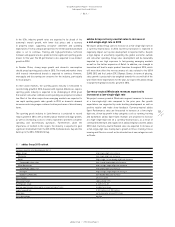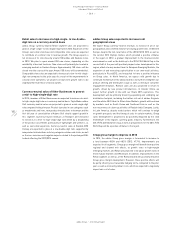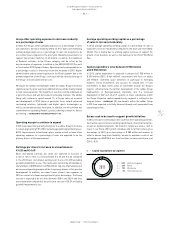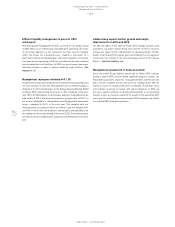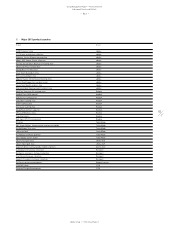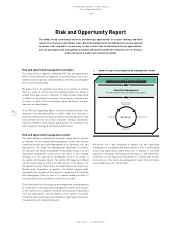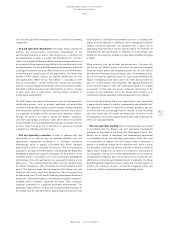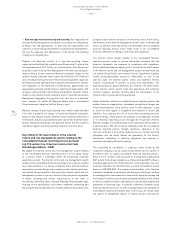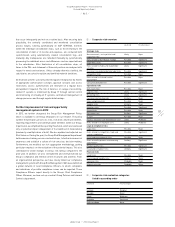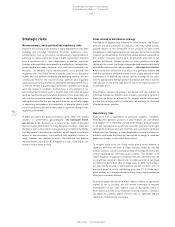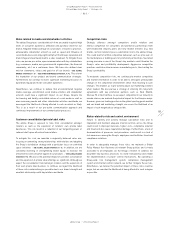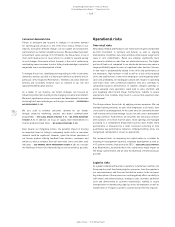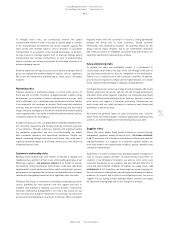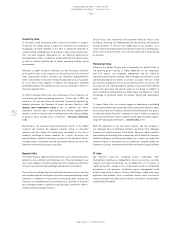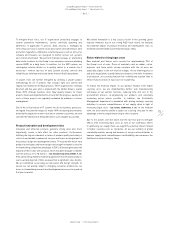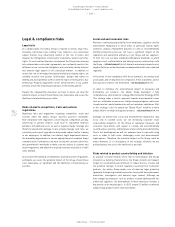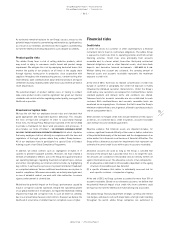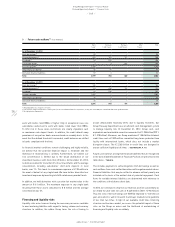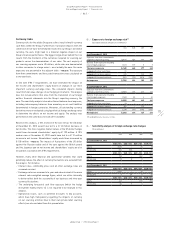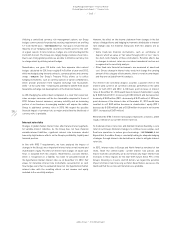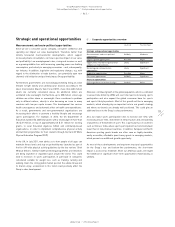Reebok 2012 Annual Report Download - page 191
Download and view the complete annual report
Please find page 191 of the 2012 Reebok annual report below. You can navigate through the pages in the report by either clicking on the pages listed below, or by using the keyword search tool below to find specific information within the annual report.
adidas Group
/
2012 Annual Report
Group Management Report – Financial Review
169
2012
/
03.5
/
Risk and Opportunity Report
/
Strategic risks
Risks related to media and stakeholder activities
The adidas Group faces considerable risk if we are unable to uphold high
levels of consumer awareness, affiliation and purchase intent for our
brands. Negative media coverage on our products or business practices,
unfavourable stakeholder activism as well as speed and influence of
social media discussion may significantly hurt the Group’s reputation and
brand image and eventually lead to a sales slowdown. To mitigate these
risks, we pursue pro-active, open communication with key stakeholders
(e.g. consumers, media, non-governmental organisations, the financial
community, etc.) on a continuous basis. We have also defined clear
mission statements, values and goals for all our brands
/
SEE GLOBAL
BRANDS STRATEGY, P. 78
/
SEE OTHER BUSINESSES STRATEGY, P. 92. These form
the foundation of our product and brand communication strategies.
Furthermore, we continue to invest significant marketing resources to
build brand equity and foster consumer awareness.
Nevertheless, we continue to believe that unsubstantiated negative
media coverage, uncontrolled social media activities and stakeholder
activism could have a significant impact on our Group. Despite the
fast-moving and hardly controllable nature of social media as well as
ever-increasing media and other stakeholder activities worldwide, we
now regard the likelihood of being affected to such an extent as likely.
This is as a result of our pro-active communication approach and
continuous improvements of our communication processes.
Customer consolidation/private label risks
The adidas Group is exposed to risks from consolidation amongst
retailers as well as the expansion of retailers’ own private label
businesses. This can result in a reduction of our bargaining power or
reduced shelf space allocation from retailers.
To mitigate this risk, we maintain a regionally balanced sales mix,
focusing on cementing strong relationships with retailers and adapting
the Group’s distribution strategy with a particular focus on controlled
space initiatives
/
SEE GLOBAL SALES STRATEGY, P. 72. In addition, we are
constantly investing in strengthening brand equity to increase the
attractiveness and consumer appeal of our products
/
SEE GLOBAL BRANDS
STRATEGY, P. 78. We assess the potential impact of customer consolidation
and the expansion of private label offerings as significant. Although we
expect the consolidation trend amongst retailers and the expansion of
their own private label business to continue, we regard the likelihood
of these risks materialising as possible due to our brand strength and
excellent relationships with key retailers worldwide.
Competition risks
Strategic alliances amongst competitors and/or retailers and
intense competition for consumers and promotion partnerships from
well-established industry peers and new market entrants (e.g. new
brands, vertical retailers) pose a substantial risk to the adidas Group.
This could lead to harmful competitive behaviour, such as price wars in
the marketplace or bidding wars for promotion partnerships. Sustained
pricing pressure in one of the Group’s key markets could threaten the
Group’s sales and profitability development. Aggressive competitive
practices could also drive increases in marketing costs, thus hurting the
Group’s profitability.
To moderate competition risks, we continuously monitor competitive
and market information in order to be able to anticipate unfavourable
changes in the competitive environment rather than reacting to such
changes. This enables us to pro-actively adjust our marketing activities
when needed. We also pursue a strategy of entering into long-term
agreements with key promotion partners such as Real Madrid,
Chelsea FC or Derrick Rose. As we expect competition in our industry to
remain intense, we evaluate the potential impact for the Group as major.
However, given our leading position in the global sporting goods market
and our brand and marketing strength, we assess the likelihood of an
impact of such magnitude as only possible.
Risks related to risk and control environment
Failure to identify and actively manage substantial risks and to
implement and maintain adequate internal controls across the Group
could result in improper decisions, higher costs, compliance violation
and fraud and also cause reputational damage. Furthermore, a lack of
documentation of processes and procedures could result in a lack of
risk awareness among the Group’s employees and facilitates fraud and
compliance violations.
In order to adequately manage these risks, we maintain a Global
Policy Manual that illustrates all relevant Group policies and is freely
accessible to all employees via the Group’s intranet. In addition, we
document key business processes to create transparency and enable
the implementation of proper control mechanisms. By operating a
Group-wide risk management system, compliance management
system and internal control network, we further mitigate these risks.
Nonetheless, we believe the potential impact of these risks could be
major, but we consider the likelihood of being affected to such a degree
as possible.


